Lichen biota of the Czech Republic
Biodiversity
So far, approximately 1,750 species of lichens have been recognised in the Czech Republic. Although perhaps dozens of them may in fact be errors, synonyms or invalid names, the real biodiversity of the Czech lichen biota almost surely exceeds the mentioned number. Every year, hitherto unrecorded species are found, which points to significant gaps in the knowledge of Czech lichens. Even species new to science appear regularly among them. In addition, modern taxonomic methods allow us to recognise otherwise practically indistinguishable species, which slowly increases the "magic" number. On a global scale, the Czech Republic can be ranked among relatively well-studied countries, but its lichen species diversity lags behind many larger countries and countries with high mountains and sea.
Endangered species and the Red List
According to the latest version of the Red List (Liška & Palice 2010), 138 lichens (9%) had become extinct in the country and another 37% of species are threatened to some extent. However, since then, several dozens out of these "extinct" lichens have been found again in the Czech Republic. Therefore, this "black" number is now around 100 species (6%). Extinct are mainly epiphytic lichens, often linked to old-growth forests and extremely sensitive to air pollution, such as Collema nigrescens, Lobarina scrobiculata, Melanohalea septentrionalis, Pannaria conoplea, Sticta sylvatica and Usnea longissima. Also, some saxicolous lichens, whose last localities disappeared, e.g. due to mining (Psora vallesiaca, Toninia toniniana), are considered extinct. Czech national hot-spots are currently distributed mainly in mountain ranges and river canyons, such as Šumava Mts, Hrubý Jeseník Mts, Křivoklát region and Podyjí National Park. In contrast, intensive agricultural regions, such as Polabí or Moravian basins, are very poor in lichens.
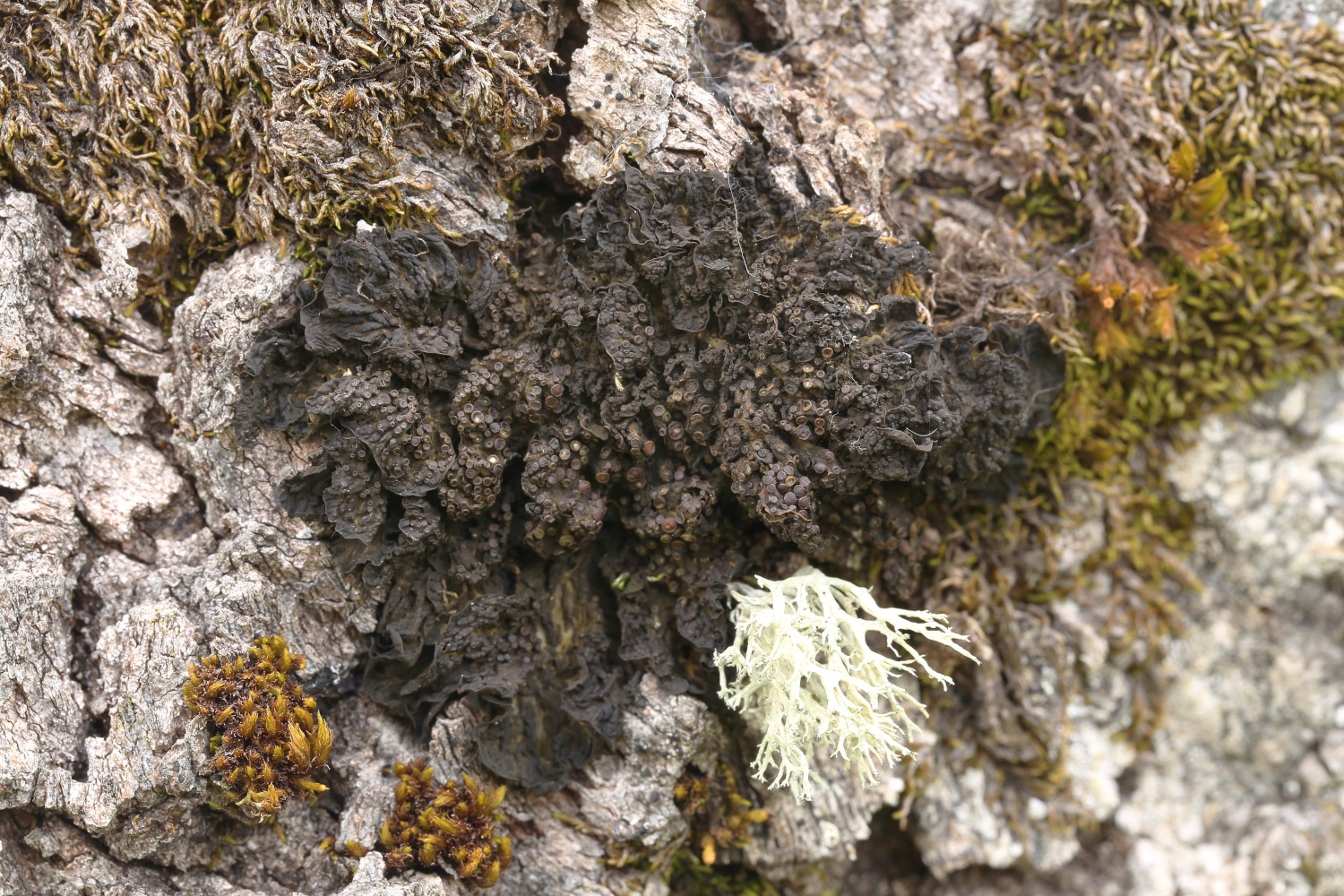
Collema nigrescens
Changes in the Czech lichen biota over time
First records of lichens in the Czech Republic come from the end of the 18th century. However, sufficient data for at least an indicative evaluation of changes in species composition over time are available only for the last 100 to 150 years. According to the literature, lichen communities have changed dramatically since then. In many regions, the lichen biota has been transformed almost completely and the species richness has decreased significantly. First major changes were reported in the beginning of the 20th century, when some very sensitive epiphytes disappeared from the country. Examples are Lobarina scrobiculata or Usnea longissima. By that time, most of Central Europe was affected by industrial pollution and emissions from local furnaces. Still, the main cause of the species decline was probably the intensive forest management, during the 19th century spreading even to the remnants of mountain primeval forests. It significantly reduced the quantity of old and natural forests, and disturbed local microclimatic conditions and the mesoclimate of large areas. The number of epiphytes kept decreasing throughout the entire country, along with the increase in air pollution, which escalated in the 70s and 80s of the last century. In the most affected regions (e.g. north and north-western Bohemia), substrate acidification completely decimated the epiphytic lichen biota. In contrast, resistant acidophilic species, such as Hypocenomyce scalaris, Lecanora conizaeoides and Scoliciosporum chlorococcum, expanded throughout the country. Acid rain significantly affected also apparently remote regions, such as the Šumava Mts. After the desulphurisation of thermal power plants in the 1990s, some epiphytic macrolichens relatively quickly returned, while others continued declining, probably in relation to eutrophication of the environment. The excess of nutrients has enabled the massive spread of nitrophilous communities (e.g., with species Physcia adscendens and Xanthoria parietina ) that dominate the current landscape. On the other hand, acidophilic lichens started to recede and some are even relatively rare today (e.g., Scoliciosporum chlorococcum). The ongoing changes in epiphytic communities are likely to be shaped by global climate change as well. At risk are relic mountain lichens, particularly arctic-alpine species, whose current occurrence in the Czech Republic is often beyond their ecological optimum. Fluctuations in the spatial and temporal distribution of precipitation will probably negatively affect sensitive suboceanic forest species. Terricolous species were also markedly affected, mainly by the transformation of agriculture during socialism. The established regime led gradually to the current landscape full of extremes, where land is either managed very intensively or, conversely, not managed at all. Species linked to occasionally disturbed habitats (e.g., Fulgensia fulgens, Heppia lutosa, Peltigera venosa, Squamarina lentigera) have considerably declined. Furthermore, eutrophication has a crucial impact on terricolous species. It favours competitively stronger vascular plants, allowing them to inhabit otherwise very extreme habitats, which were hitherto a paradise for lichens. We do not have much data about saxicolous lichens. However, these seem to be touched less by the landscape changes.
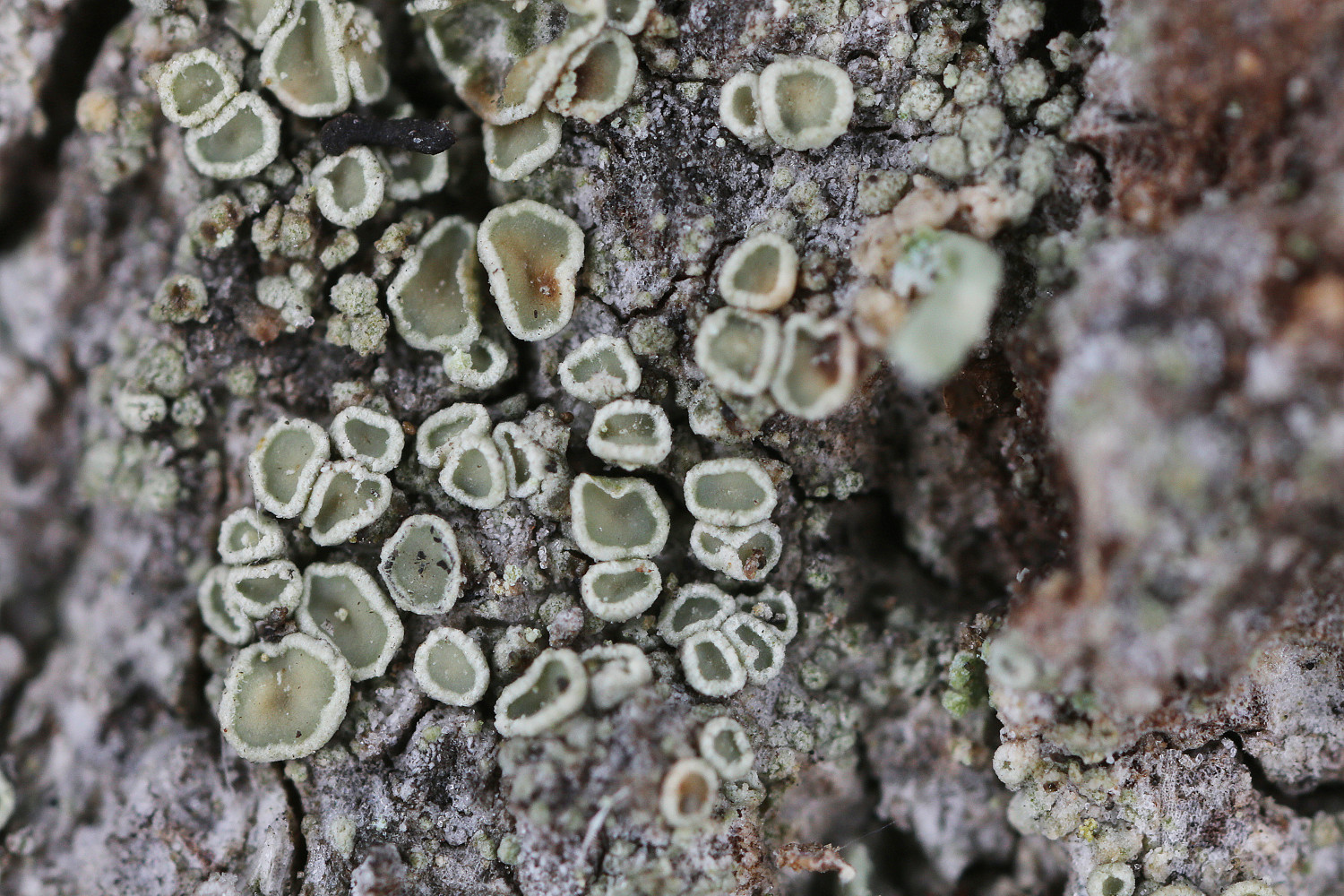
Lecanora conizaeoides
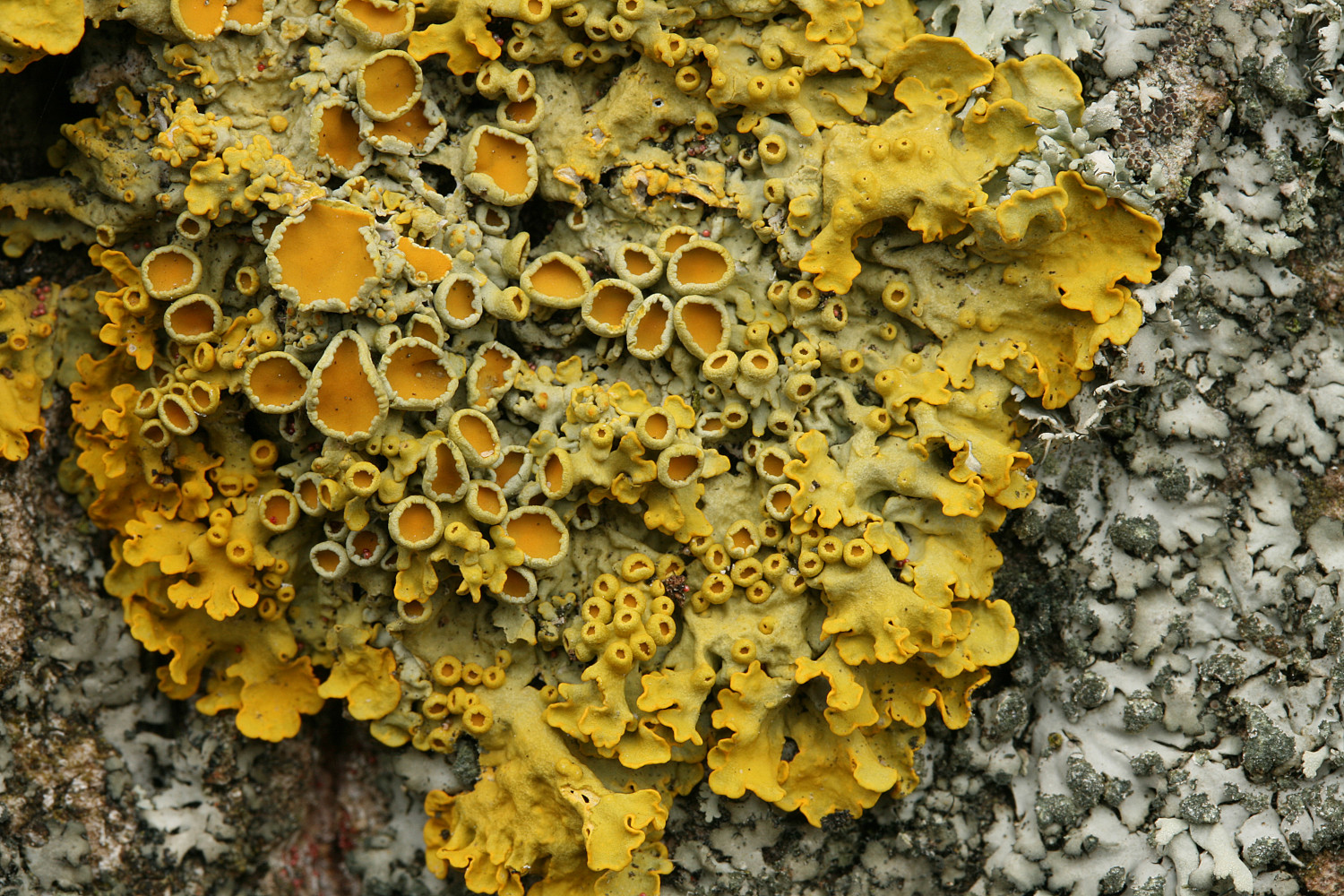
Xanthoria parietina
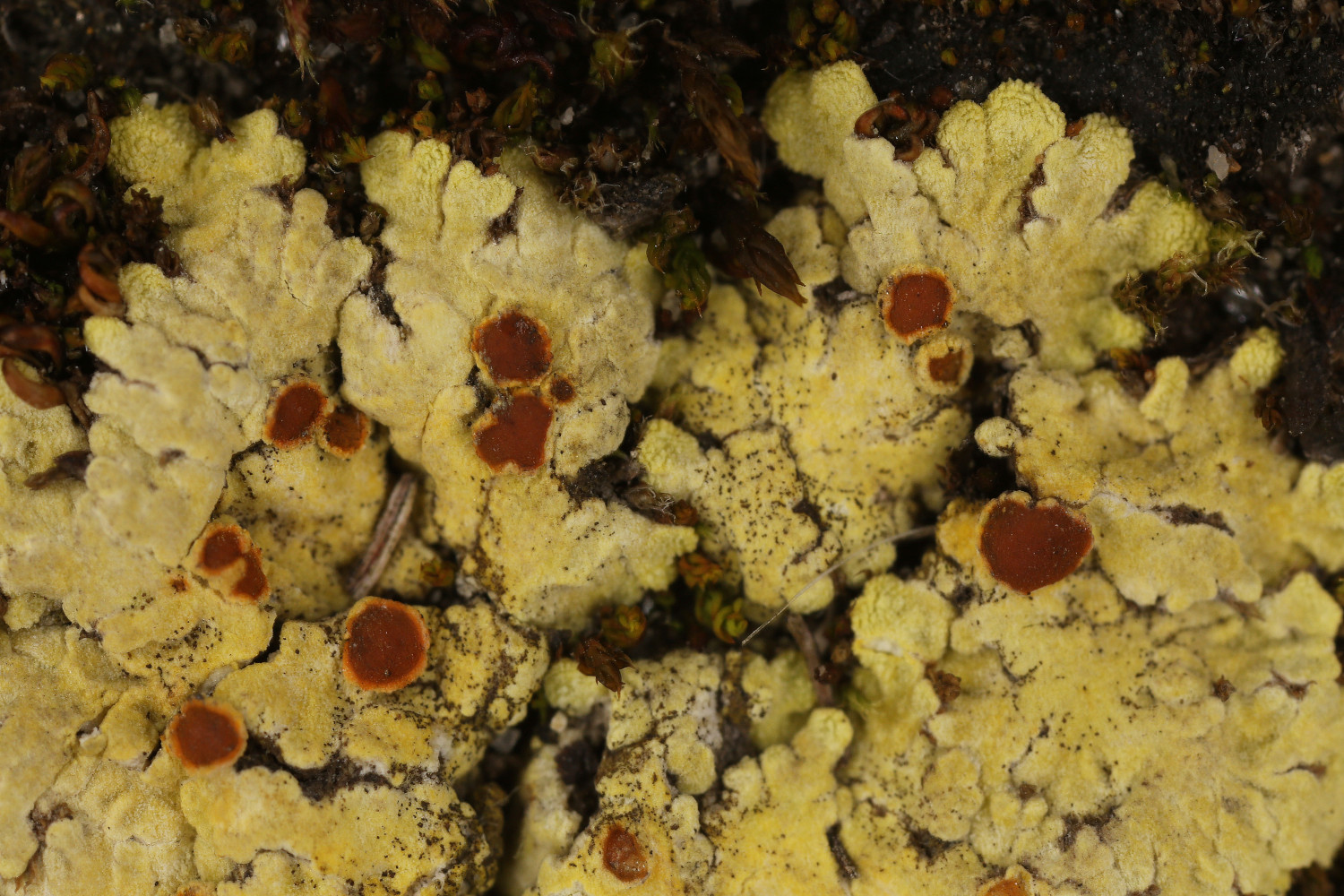
Fulgensia fulgens
Phytogeography and endemism
Analogous to vascular plants, also concerning lichens, we can meet several phytogeographic elements from distinct parts of Europe in the Czech Republic. Typical arctic-alpine species (such as Alectoria nigricans, Arctoparmelia centrifuga, Flavocetraria cucullata, Thamnolia vermicularis agg.) can be found in our highest mountains. In contrast, dry and warm areas host primarily Mediterranean lichens (e.g., Fulgensia fulgens, Squamarina lentigera). Moist mountain forests and shaded ravines form suitable habitats for some suboceanic species (e.g., Bunodophoron melanocarpum, Cladonia subcervicornis, Gyalideopsis muscicola, Phaeographis inusta, Pilophorus strumaticus) and areas poor in precipitation, such as southern Moravia, are inhabited by continental lichens (Physcia aipolioides, Gyalidea asteriscus, Xanthoria papillifera and others). Lichens have large ranges thanks to a relatively easy long distance diasporic transport. Cosmopolitan or subcosmopolitan distribution is not an exception. Therefore, it is not surprising that Czech lichen biota does not include any endemic species. In general, local endemism is rare among European lichens and occurs only in very specific habitats. However, four species described from the Czech Republic have not been found anywhere else: Aspicilia serpentinicola, Bacidina flavoleprosa, Lecanographa aggregata a Polyblastia suzae. Very recently, Acarospora fissa, Biatora hyalina, Buellia microcarpa, Verrucaria substerilis, V. tenuispora and V. teyrzowensis were described from the country (Vondrák et al. 2022). They are also known only from the Czech Republic, but we expect they will be found at other localities soon.
Thamnolia vermicularis
Ecological preferences
For the purposes of this Atlas, we divide lichens into four main ecological categories — terricolous (growing on the soil), saxicolous or epilithic (on rocks), epiphytic (on living plants) and lignicolous or epixylic (on wood). Saxicolous lichens form the largest group, followed by epiphytic, epixylic and terricolous species. Most species prefer a specific type of substrate or habitat. Only few species, such as Xanthoria parietina or some members of Lepraria and Peltigera genera, commonly grow on various substrates. Lichen favourite habitats are old trees, old-growth forests, natural rocks and screes, i.e. those ranked among local biodiversity hotspots. Such ecosystems are usually stable and little disturbed.
Taxonomy and life histories
From a taxonomical point of view, lichens are fungi, Ascomycota in the vast majority. Only three lichens occurring in Czech Republic belong to Basidiomycota. We commonly distinguish three basic lichen thallus types: crustose, foliose and fruticose. Species with the last two thallus types are called macrolichens. Crustose species are called microlichens, even though some of them may be relatively big. Out of all species growing in Czech Republic, 78% is crustose, 13% is foliose and 9% is fruticose. This simple categorisation comprises also a rank of transitional or special types. For example, squamulose, leprose (formed by soredia) or placodioid (transitional to foliose thallus) are subtypes of crustose thallus. Another specific type is so called dimorphic thallus, characteristic for many Cladonia species. Basal squamules can be formally classified as foliose type, while podetia as fruticose type. The most common symbiotic lichen partner is a green alga, often from the genus Trebouxia. Approximately 93% of Czech lichens contains green algae. A bit less common symbiont is cyanobacteria, occurring in 7% of Czech lichens. Such lichens are called cyanolichens. Some species may even contain both symbiotic partners, for example, Lobaria pulmonaria, Pilophorus strumaticus, Ricasolia amplissima or some members of the genera Peltigera, Solorina and Stereocaulon. There are various strategies of lichen reproduction. A classic, sexual reproduction relies on the ascospore or basidiospore production inside the fruiting bodies. There are two most frequent types of fruiting bodies – apothecia (84% of Czech species) and perithecia (enclosed fruiting bodies, 14% of Czech species). Lichen also reproduce asexually, for example, via thallus fragmentation or via conidia, asexual spores that are usually produced in closed pycnidia. A specific way of asexual lichen reproduction is the formation of structures containing both symbiotic partners. Such structures are called soredia, isidia, blastidia or schizidia. The last-mentioned strategy significantly facilitates lichen dispersal.
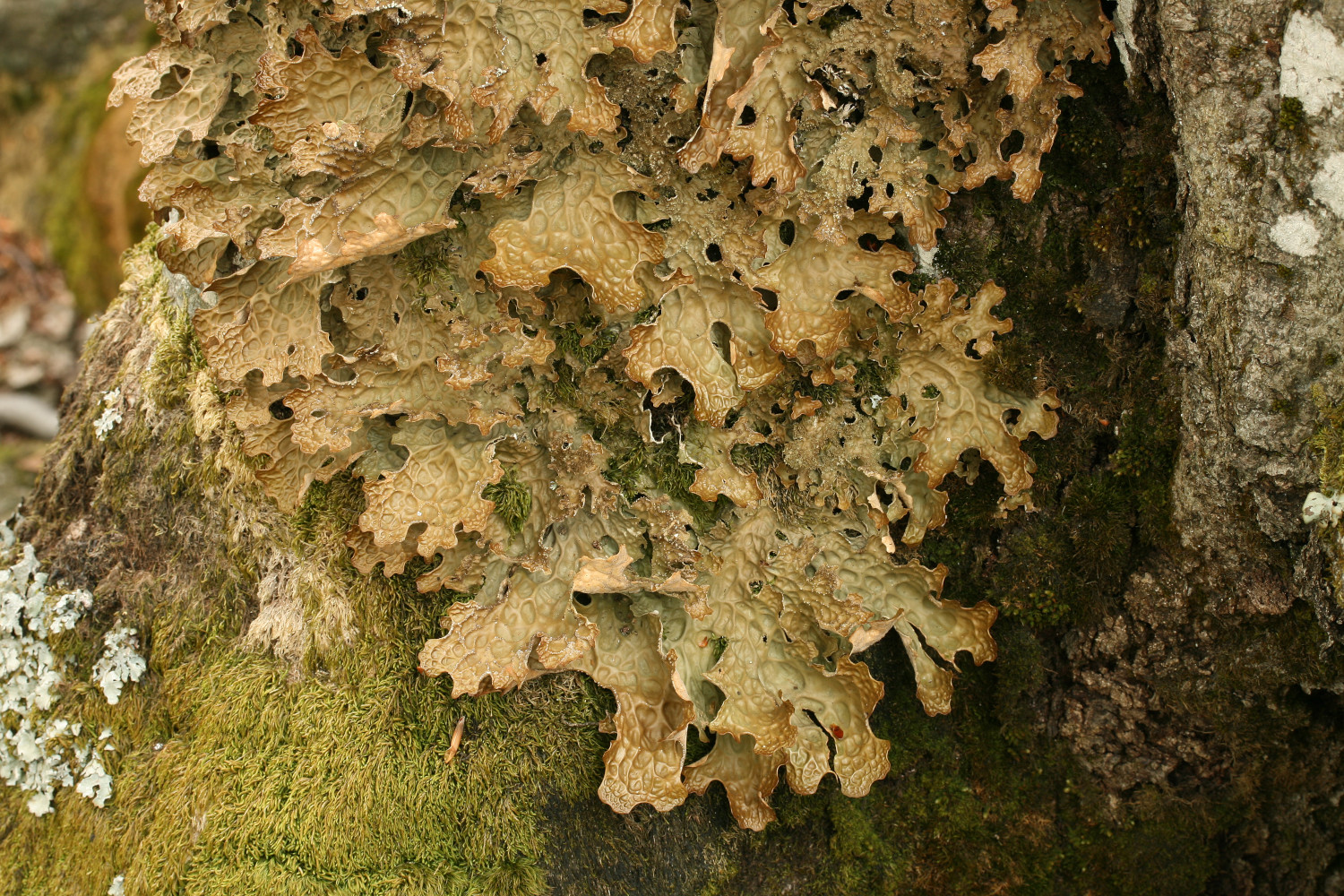
Lobaria pulmonaria
Lichen vs. fungus
As lichens are taxonomically “only” fungi that increase their living standards by symbiosis with algae or cyanobacteria, there is a variety of intermediate stages between lichenised and non-lichenised fungi. Lichenisation has evolved independently several times and in various taxonomical groups. Some species exhibit a facultative lichenisation, others only a narrow affiliation to alga without any mark of the true lichenisation, such as the incorporation of algal cells into the thallus. In this Atlas, you can find also non-lichenised fungi that used to be classified as lichens in the past and therefore are traditionally studied by lichenologists (e.g. some members from the genera Ramonia or Thelocarpon). Some other non-lichenised fungi are, due to their lichen-like appearance and frequent occurrence in a company of algae, also studied rather by lichenologists than mycologists (e.g., the genera Arthopyrenia, Chaenothecopsis, Epigloea, Microcalicium, Mycocalicium or Stenocybe). In fact, the relationship between fungi and algae are often not that simple as we would expect.
_25.6x_scale.jpg)
Mycocalicium subtile
Recomended literature about the Czech lichen biota
- Liška J. (2012): Lichen flora of the Czech Republic. – Preslia 84: 851–862. http://www.preslia.cz/P123Liska.pdf
- Liška J. & Palice Z. (2010): Červený seznam lišejníků České republiky (verze 1.1). – Příroda, Praha, 29: 3–66.
- Palice Z. (2017): Lichen Biota of the Czech Republic. – In: M. Chytrý et al. [eds], Flora and Vegetation of the Czech Republic. Plant and Vegetation 14: 177–192.
- Vězda A. & Liška J. (1999): Katalog lišejníků České republiky. – Botanický ústav ČSAV, Průhonice.